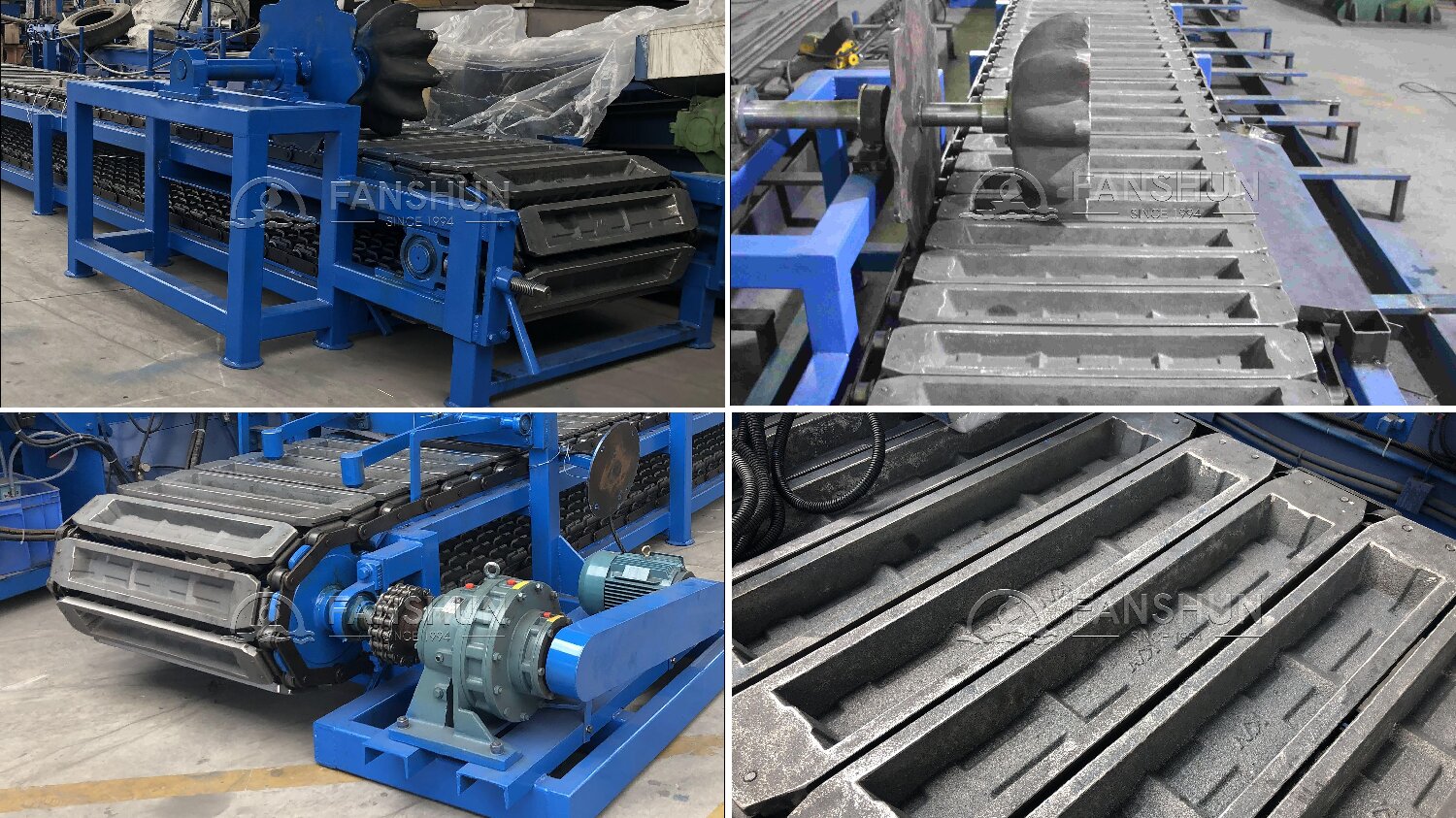How Are Aluminum Ingots Made from Scrap? A Full Production Line Revealed!
In the global race for sustainability and circular manufacturing, aluminum ingot production has taken center stage. But how exactly are aluminum ingots made from scrap metal? Let’s dive deep into a modern aluminum ingot production line — from Aluminum melting furnace to Automatic ingot stacking machine — and reveal how discarded metal becomes valuable material once again.
The Journey Begins with the Aluminum Scrap
The process starts when aluminum scrap, collected from various industrial, automotive, and household sources, enters the recycling facility. This scrap is cleaned, sorted, and prepared for melting in the Aluminum melting furnace. The Aluminum melting furnace plays a crucial role in breaking down the scrap into molten metal, ensuring impurities are separated and high-quality aluminum ingot can be produced.
Modern Aluminum melting furnace systems are engineered for energy efficiency and emission control. These Aluminum melting furnace units feature advanced burner technology, temperature regulation, and oxygen control. In a standard 24-hour operation cycle, the Aluminum melting furnace is used repeatedly, maintaining a constant temperature to ensure continuous melting of aluminum scrap.
From Liquid to Solid: Casting the Aluminum Ingot
Once the aluminum scrap has been transformed into molten aluminum in the Aluminum melting furnace, the next step is casting. Here, the molten aluminum is poured into Ingot mold. These Ingot mold units are designed to shape the aluminum into standard aluminum ingot sizes suitable for downstream industries like automotive, aerospace, and construction.
The Ingot mold is typically made of cast iron or steel and is engineered to withstand extreme temperatures and thermal cycles. Cooling systems are integrated into each Ingot mold to rapidly solidify the metal. In many facilities, hundreds of Ingot mold trays operate in tandem, ensuring high-volume aluminum ingot output. Ingot mold design directly influences the shape, size, and cooling rate of the final aluminum ingot, making Ingot mold selection critical.
To ensure durability, every Ingot mold undergoes surface treatment. Technicians regularly inspect each Ingot mold to prevent cracks and deformation. Advanced Ingot mold lines now include self-lubrication systems. With constant innovation, the Ingot mold has evolved to improve heat transfer and demolding efficiency. A robust Ingot mold system ensures a better aluminum ingot finish and fewer production halts.
Some Ingot mold designs are tailored for specialty aluminum ingot shapes. Modular Ingot mold sets offer faster changeover times, enhancing flexibility in production. In recent upgrades, smart Ingot mold trays are equipped with RFID tags for tracking lifespan and usage cycles. Using quality Ingot mold is not just about casting; it's about precision, safety, and productivity.
With technological advances, manual casting has become obsolete. The rise of the Automatic Ingot Casting Machine has revolutionized this stage of the aluminum ingot process. The Automatic Ingot Casting Machine ensures consistent pouring, precise weight control, and faster cycles. Each Automatic Ingot Casting Machine is calibrated to work seamlessly with the Aluminum melting furnace and Ingot mold, minimizing waste and improving overall yield.
A modern Automatic Ingot Casting Machine not only automates the pouring process but also ensures that every aluminum ingot is produced under uniform pressure and temperature. With smart sensors and PLC control, the Automatic Ingot Casting Machine can cast hundreds of aluminum ingots per hour with minimal human intervention.
Efficiency and Order: The Role of the Automatic Ingot Stacking Machine
Once the aluminum ingot is solidified in the Ingot mold, the final step is packaging and logistics. This is where the Automatic ingot stacking machine comes into play. The Automatic ingot stacking machine collects the solidified aluminum ingot from the casting station and stacks them neatly onto pallets.
In large-scale facilities, the Automatic ingot stacking machine is crucial for maintaining speed and organization. Without the Automatic ingot stacking machine, stacking would require intensive manual labor and slow down the process. These machines are synchronized with the Automatic Ingot Casting Machine, forming a streamlined, fully automated aluminum ingot production system.
A high-end Automatic ingot stacking machine includes features like robotic arms, sensor-based alignment, and automatic strapping. These allow for continuous operation and minimal downtime. The aluminum ingot is now ready to be transported to manufacturers worldwide.
Why This Process Matters
The global aluminum industry depends heavily on the efficiency of the aluminum ingot production line. With more than 75% of all aluminum ever produced still in use today, the ability to recycle and cast aluminum ingots efficiently determines environmental impact and business profitability.
Using state-of-the-art Aluminum melting furnace units, precise Ingot mold technology, high-speed Automatic Ingot Casting Machine, and labor-saving Automatic ingot stacking machine, manufacturers can transform waste into wealth. Each step — from scrap to aluminum ingot — is optimized for sustainability, cost-efficiency, and productivity. Each Ingot mold is part of that transformation.
A Look into the Future
As demand for aluminum grows in electric vehicles, renewable energy, and aerospace, the pressure to improve aluminum ingot production lines increases. Future Aluminum melting furnace designs will likely incorporate AI and real-time data feedback. Similarly, Ingot mold configurations may shift toward modular, self-cooling types to increase output. The Automatic Ingot Casting Machine may become smarter with predictive maintenance and auto-correction features.
Meanwhile, the Automatic ingot stacking machine is expected to integrate with warehouse management systems for real-time inventory tracking and logistics. This level of integration will make aluminum ingot production lines more adaptive and intelligent than ever before.
From the roar of the Aluminum melting furnace to the precise pour of the Automatic Ingot Casting Machine, and the rhythmic stacking by the Automatic ingot stacking machine, the modern aluminum ingot production line is a marvel of engineering. It gives new life to scrap metal and fuels industries around the globe.
Now you know — this is how aluminum ingots are made from scrap!


